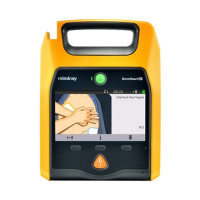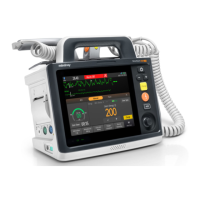11 - 5
11.5.2.5 Setting Arrhythmia Refractory Periods
• Refractory periods are only applicable to arrhythmias in the medium priority chains.
• Refractory periods have no impact on Tachy, Brady, HR High, HR Low, A-Fib/A-Fib End, Irr Rhythm/Irr
Rhythm End.
11.6 ST Segment Monitoring
11.6.1 ST Safety Information
• ST values may be affected by such factors as some drugs or metabolic and conduction disturbances.
• ST deviation is often calculated at a fixed offset from the J point. Changes in heart rate may affect ST.
• The ST deviation measurement algorithm has been tested for accuracy. The significance of ST
segment changes needs to be determined by a physician.
• The equipment provides ST deviation level change information. The clinical significance of the ST
level change information should be determined by a physician.
11.6.2 Saving the Current ST as Baseline
• Updating ST baseline affects ST alarms.
11.7 QT/QTc Interval Monitoring
11.7.1 Displaying QT/QTc Numerics
• QTc values are calculated based on the QT-HR, not the ECG HR. For more information, see
11.7.2Saving the Current QTc as Baseline.
• The display of the QT numeric area differs as related settings change.
11.7.2 Saving the Current QTc as Baseline
• Updating QTc baseline affects ΔQTc value and alarm.
11.8 ECG Relearning
• Take care to initiate ECG relearning only during periods of predominantly normal rhythm and when
ECG signal is relatively noise-free. If ECG learning takes place during arrhythmia, the ectopics may
be incorrectly learned as normal QRS complex. This may result in missed detection of subsequent
events of arrhythmia.

